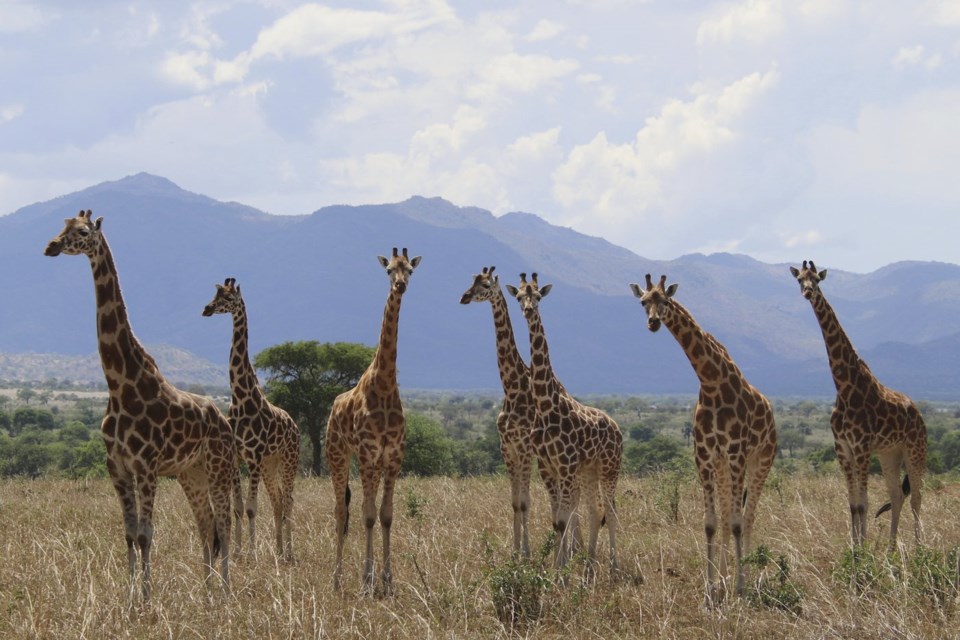WASHINGTON (AP) — Giraffes are a majestic sight in Africa with their long necks and distinctive spots. Now it turns out there are four different giraffe species on the continent, according to a new scientific analysis released Thursday.
Researchers previously considered all giraffes across Africa to belong to a single species. New data and genetic studies have led a task force of the International Union for Conservation of Nature to split the tallest mammal on land into four groups — Northern giraffes, reticulated giraffes, Masai giraffes and Southern giraffes.
Key studies have emerged in the past decade highlighting significant differences between the four species, said the IUCN’s Michael Brown, a researcher in Windhoek, Namibia, who led the assessment.
Naming different giraffes matters because “each species has different population sizes, threats and conservation needs,” he said. “When you lump giraffes all together, it muddies the narrative.”
Northern giraffes — whose range includes parts of Democratic Republic of Congo, South Sudan and Central African Republic – face threats from political instability and poaching. Masai giraffes in Kenya and Tanzania face pressure from habitat loss, as open savannas are converted to cattle pastures and fields.
Considering four giraffe species “is absolutely the right decision, and it’s long overdue,” said Stuart Pimm, a Duke University ecologist who wasn’t involved in the analysis.
While in the past researchers scrutinized giraffes’ spots, the new categories made use of newer methods including extensive analysis of genetic data and studies highlighting key anatomical differences, such as skull shape.
What appear like horns sticking up from the foreheads of giraffes are actually permanent bony protrusions from the skull, different from deer antlers that are shed annually.
Over the past 20 years, scientists have also gathered genetic samples from more than 2,000 giraffes across Africa to study the differences, said Stephanie Fennessy at the nonprofit Giraffe Conservation Foundation, who helped in the research.
It used to cost tens of thousands of dollars to sequence each genome, but advances in technology have brought the cost down to about $100, making it more accessible to nonprofit and conservation groups, she said.
According to population estimates from the foundation, the most endangered giraffe is the Northern giraffe, with only about 7,000 individuals left in the wild.
“It’s one of the most threatened large mammals in the world,” said Fennessy.
Southern giraffes are the most populous species, with around 69,000 individuals. There are around 21,000 reticulated giraffes left in the wild, and 44,000 Masai giraffes, according to the foundation.
“If not all giraffes are the same, then we have to protect them individually,” said Fennessy.
___
The Associated Press Health and Science Department receives support from the Howard Hughes Medical Institute’s Department of Science Education and the Robert Wood Johnson Foundation. The AP is solely responsible for all content.
Christina Larson, The Associated Press



